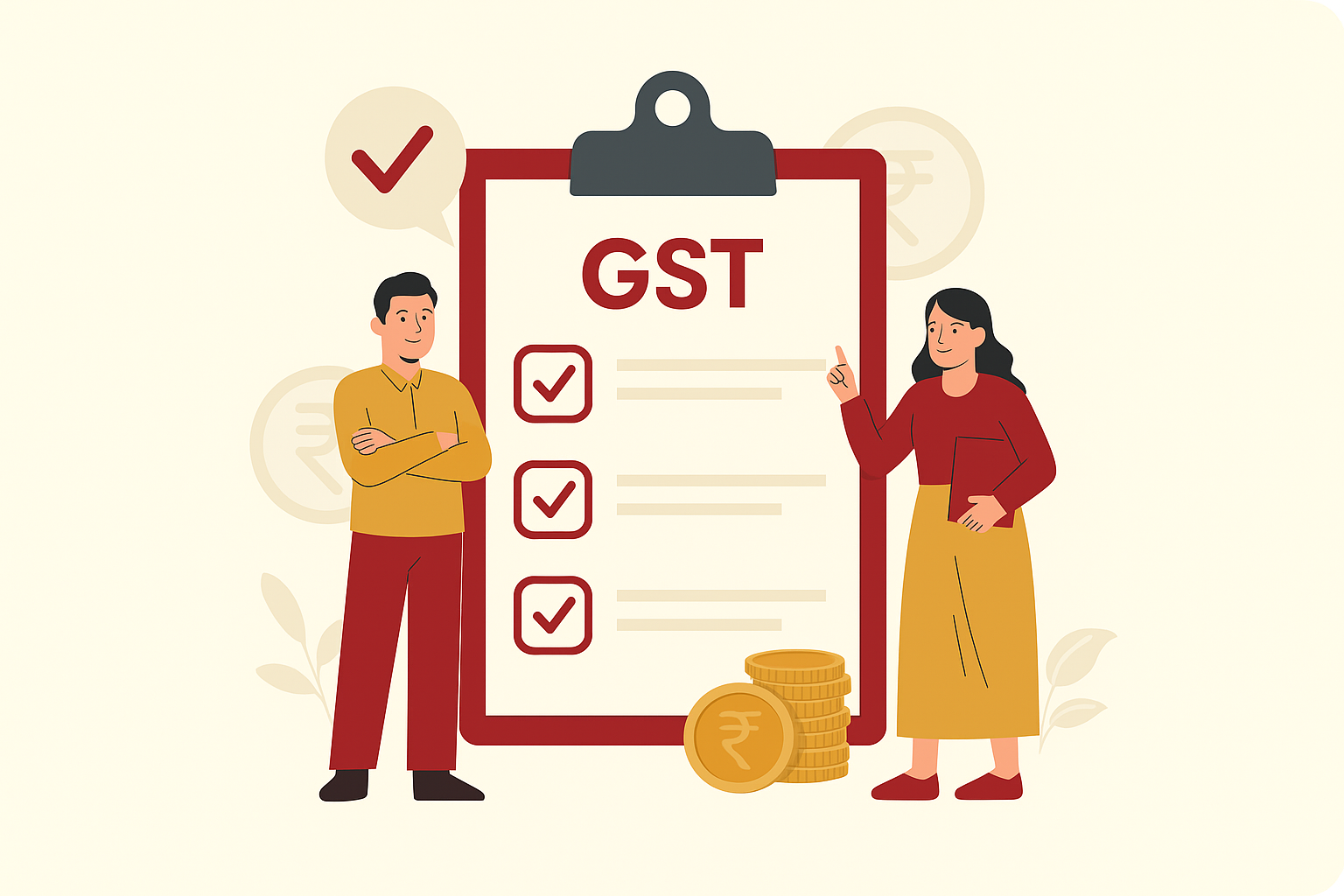Indian businesses were always busy trying to manage the complicated web of central and state taxes (like VAT, excise & service tax). GST arrived as a blessing by uniting all those taxes into one which simplifies compliance and reduces administrative burdens for small businesses.
And now in 2025, new rules and stricter guidelines introduced have made staying GST compliant more important than before. Here’s a detailed, easy to follow GST compliance checklist designed for small businesses, along with a little bonus knowledge on how small business accounting software can make your journey smoother.
- GST registration: Are you registered?
- Any business with annual aggregate turnover above ₹20 lakh (₹10 lakh in special category states) must register for GST.
- You can register, even if your business turnover is less than the limit needed for GST registration. This can help small businesses claim input tax credit and boost credibility.
- If your business is in multiple states, you need separate GST registrations for each state.
- Accurate record-keeping: The backbone of compliance
- Maintain detailed records of all invoices, receipts, credit/debit notes, and GST payments.
- Make sure every record includes GSTIN, HSN/SAC codes, and correct tax rates.
- Maintain records for at least six years from the annual return filing date.
- Small business accounting solutions automate record-keeping, reduce manual errors, and arrange documents for easy retrieval during audits.
- GST-Compliant Invoicing
- Every invoice must meet GST requirements: GSTIN, invoice number, date, buyer/seller details, HSN/SAC codes, tax breakup, and digital signature (if applicable).
- E-invoicing is mandatory for businesses with annual turnover above ₹10 crore, and the limit is expected to lower further in 2025.
- From April 1, 2025, invoices must be uploaded to the Invoice Registration Portal (IRP) within 30 days of issuance, or you risk losing input tax credit.
- Business accounting software generates GST-compliant invoices and can automate uploading of e-invoices, as a result you never miss a deadline.
- Timely GST Return Filing
- File GSTR-1 (outward supplies), GSTR-3B (summary return), and GSTR-9 (annual return) on time.
- Use the QRMP (Quarterly Return Monthly Payment) scheme if applicable to reduce filing frequency.
- Late filings attract penalties and can block your input tax credit.
- Small business accounting software sends automated reminders for return deadlines and can even auto-populate GST returns use your transaction data.
- Input Tax Credit (ITC) Reconciliation
- Match your purchase records with your suppliers’ GSTR-1 filings to claim ITC.
- Reconcile ITC regularly to avoid mismatches, which can lead to ITC denial or delays.
- ITC claims are now restricted to 99% unless specific conditions are met.
- Automated reconciliation tools in small business accounting software take note of mismatches and help you track eligible credits.
- Reverse Charge Mechanism (RCM) Compliance
- Identify transactions where you must pay GST under RCM (e.g., import of services, legal fees, purchases from unregistered dealers).
- Pay and report RCM taxes on time to avoid penalties.
- Accounting software can note RCM transactions and generate the necessary reports for compliance.
- E-Way Bill Generation
- Generate E-Way Bills for the movement of goods exceeding the mentioned value limit.
- Make sure all details are correct to avoid shipment delays or penalties.
- From 2025, stricter E-Way Bill rules and two-factor authentication are in place.
- Many small business accounting solutions now include or are working on including E-Way Bill generation, reducing manual entry and errors.
- GST Composition Scheme: Are You Eligible?
- Businesses with turnover up to ₹1.5 crore (₹75 lakh for services) can opt for the scheme for lower tax rates and simpler compliance.
- Composition dealers cannot claim ITC or make inter-state sales.
- Small business accounting software tracks turnover and helps you assess eligibility for the scheme.
- Stay Updated with GST Amendments (Changes)
- In 2025, we expect changes like compulsory multi-factor authentication (MFA) for GST portal access, new invoice series requirements, and stricter penalties for non-compliance.
- Regularly update your systems and processes to reflect the latest rules.
- Accounting solutions generally update the new GST rules on a regular basis, which keeps your business compliant.
- Year-End GST Compliance Checklist
- Make sure all GST returns are filed, and payments are made.
- Reconcile ITC and finalize accounts.
- Renew Letter of Undertaking (LUT) for exports, if applicable.
- Maintain an audit trail and preserve all records for at least five years.
- Small business accounting software provides year-end checklists, audit trails, and easy access to historical records.
Conclusion: Make GST Compliance Effortless with the Right Tools
GST compliance in 2025 is more demanding but also simplified with the right approach. Small business accounting software can automate invoicing, return filing, ITC reconciliation, and record-keeping, reducing your compliance burden and risk penalties. By following this GST compliance checklist and using the right technology, small businesses can focus on growth while staying fully compliant with the latest tax laws.

Leave a comment